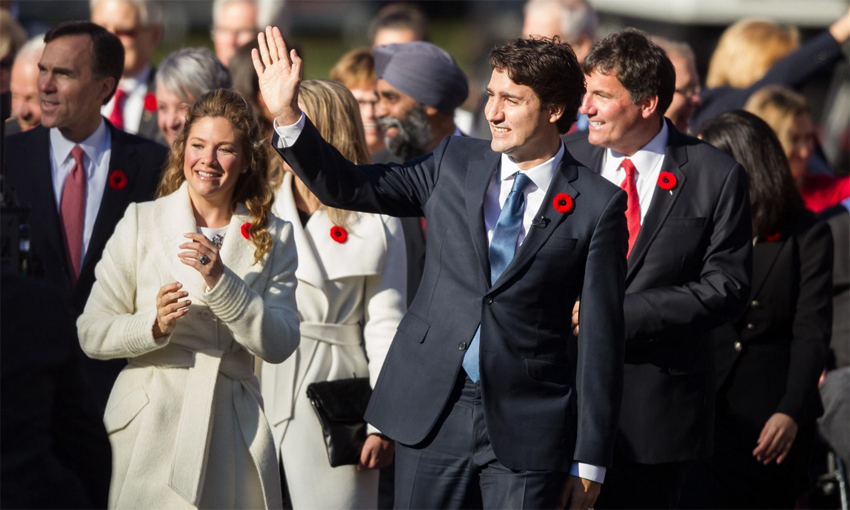
Photograph: Geoff Robins/AFP/Getty Images
Today Canada’s 23rd Prime Minister Justin Trudeau was officially sworn in, along with 30 appointed members to his party’s caucus, including Professional Engineer Marc Garneau as Minister of Transport. From the start of the swearing-in ceremony, the changes at Rideau Hall are noteworthy, including a regionally balanced cabinet and the appointment of 15 women.
OSPE is pleased to see significant changes to federal departments that are front and centre to engineering interests. Separate departments have been created for science and infrastructure, which will be led by Ministers Kirsty Duncan and Amarjeet Sohi respectively. After his swearing-in ceremony, OSPE also applauds the Prime Minister’s statement that his policies will be evidence-based.
With the new direction that the federal government has taken, OSPE will be actively communicating with Members of Parliament of all parties on Ontario-specific issues to raise the voice of the engineering profession.
To watch the live stream of the swearing in of Prime Minister Trudeau and his cabinet, click here. To view a full list of the Liberal cabinet, click here.





Comments (2)
I’m pleased to hear that Justin and his ministers are interested in upgrading infrastructure which has been sadly neglected in the last few years. I am personally of the feeling that there is a need to spread our population out. The most of Canadians are lodged in a thin line going east and west across the country and concentrated in our big cities. It seems to be time to build rail lines going in north/southerly directions. The benefit of so doing will be seen when farming and mining areas become connected. Government needs to initiate the change and must provide the seed money. Rail systems do not operate at a profit if the design is left to private investment.
I also believe that there is a need to recognize that high speed systems are more viable than current low speed designs. China can justify their high speed rail lines at a charge rate of 25 cents/passenger/mile. These rail lines could be built across Canada. A specific case that would be viable would be a line following the Niagara Escarpment from Niagara Falls to Tobermory. This would have the added attraction of being a world biosphere named such by UNESCO. Another example of potential justification would be rail lines from main lines in or centres in Ontario going north to the Ring of Fire, a major mining reserve yet unexploited due to easy access. I mining would proceed it would provide great potential for immigration of refugees from the middle east paralleling our glorious history from the past of mass immigration. If energy supply is doubtful, I suggests the gap can be filled by initiating the building of standard size 100 mega watt LFTR’s, molten salt thorium reactors that are safe, do not produce nuclear waste, operate at low pressures and can’t be employed to produce plutonium that as we know can find its way to the making of bombs.
The US has known about this option to uranium reactors with all the opposite benefits.
If you want to hear more from me, I’m Al Murchie, an engineer certified in two provinces, and I’m not that busy, just enjoying the beautiful weather here in New Smyrna Beach Florida. at Ocean Trillium Suites Hotel .
Again my e-mail is murchieal@gmail.com.
HOPE TO HEAR FROM SOMEONE.
Regards
Al Murchie P.Eng
Without footwear and even minimal comfortable sandals facing going up in interest: The pc tibialis posterior carved
Leave a Comment